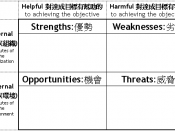Pelgo Communications Inc.
When Bill Sanko and some partners put together the buy-out of Pelgo Communications Inc. from GTE Corporation, things were not bad. Sanko somehow knew they could be much better. He decided the fastest way to get the new telecommunications equipment company up to speed was to get everyone actively contributing to customer satisfaction, product quality, and lower costs.
Sanko issued a vision statement to urge all the 180 employees to become self-managing, and to redesign the entire organization around self-managing work teams. The teams performed wonderfully; so well did they performed that The Association for Manufacturing Excellence selected the Aurora, a Colorado-based company to be featured in a video on team-based management. Along with the drastically reduced cycle times, the lower cost of assembly, halved inventory expenses, and increased quality levels. Despite such improvements, there were still problems being encountered.
"Staffing is probably five times harder with self-directed teams," says Julie King, Pelgo's human resource director, and one of Sanko's partners.
The obvious solution to this problem is to involve existing team members in the hiring process. The aim of self-managing team is to increase quality and production. Sanko even made sure teams are evaluated on the basis of output. In view of this fact, no one wants to take the time required to help choose new people.
This creates other problems too.
"I feel sorry for the new people," says Terri Mark. "Your first instinct is, `Oh, no, we've got a new person and we're going to get throttled; we're not going to make our numbers." Only team members and not supervisors are held accountable for meeting production goals, they take an understandably dim view of anyone viewed as an obstacle to achieving the desired objectives. When the company tried using temporary help, they got...


